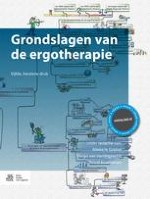Samenvatting
Spelen is de puurste vorm van expressie die kinderen laten zien. Ergotherapeuten zijn bij uitstek geschikt om deze betekenisvolle activiteit voor kinderen verder te exploreren om meer inzicht in de betekenis en de waarde van spel te krijgen. In dit hoofdstuk wordt spel belicht vanuit ‘doen’, ‘zijn’, ‘worden’ en ‘erbij horen’. Playfulness en flow zijn belangrijk voor de spelparticipatie. Klinimetrisch onderzoek naar het effect van interventies op het gebied van spel is nodig ten behoeve van betrouwbare en valide instrumenten. Het zoeken van samenwerkingspartners en het bundelen van krachten is van belang om spel stevig op de kaart te zetten. Patiëntenverenigingen en organisaties ter bevordering van spelparticipatie zijn belangrijke partners. Daarnaast is een het van de kerntaken van de ergotherapeut mensen met een beperking begeleiding te bieden naar vrijetijdsbesteding. Toch worden doelen op het gebied van vrijetijdsbesteding vaak te weinig uitgediept. Hoe beleeft een cliënt vrijetijdsbesteding? Waar loopt iemand tegenaan? En vooral: waarom heeft een cliënt zoveel belemmeringen of weerstand? Door als ergotherapeut de maatschappelijke participatie centraal te stellen en letterlijk in de maatschappij te functioneren (door bijvoorbeeld mee te gaan naar activiteiten van de cliënt), krijgt de ergotherapeut een realistisch beeld hoe vrijetijdsbesteding voor mensen met een gezondheidsbeperking geregeld is en beleefd wordt.
